#Longitudinal Tracking
Explore tagged Tumblr posts
Text
The whole "the brain isn't fully mature until age 25" bit is actually a fairly impressive bit of psuedoscience for how incredibly stupid the way it misinterprets the data it's based on is.
Okay, so: there's a part of the human brain called the "prefrontal cortex" which is, among other things, responsible for executive function and impulse control. Like most parts of the brain, it undergoes active "rewiring" over time (i.e., pruning unused neural connections and establishing new ones), and in the case of the prefrontal cortex in particular, this rewiring sharply accelerates during puberty.
Because the pace of rewiring in the prefrontal cortex is linked to specific developmental milestones, it was hypothesised that it would slow down and eventually stop in adulthood. However, the process can't directly be observed; the only way to tell how much neural rewiring is taking place in a particular part of the brain is to compare multiple brain scans of the same individual performed over a period of time.
Thus, something called a "longitudinal study" was commissioned: the same individuals would undergo regular brain scans over a period of mayn years, beginning in early childhood, so that their prefrontal development could accurately be tracked.
The longitudinal study was originally planned to follow its subjects up to age 21. However, when the predicted cessation of prefrontal rewiring was not observed by age 21, additional funding was obtained, and the study period was extended to age 25. The predicted cessation of prefrontal development wasn't observed by age 25, either, at which point the study was terminated.
When the mainstream press got hold of these results, the conclusion that prefrontal rewiring continues at least until age 25 was reported as prefrontal development finishing at age 25. Critically, this is the exact opposite of what the study actually concluded. The study was unable to identify a stopping point for prefrontal development because no such stopping point was observed for any subject during the study period. The only significance of the age 25 is that no subjects were tracked beyond this age because the study ran out of funding!
It gets me when people try to argue against the neuroscience-proves-everybody-under-25-is-a-child talking point by claiming that it's merely an average, or that prefrontal development doesn't tell the whole story. Like, no, it's not an average – it's just bullshit. There's no evidence that the cited phenomenon exists at all. If there is an age where prefrontal rewiring levels off and stops (and it's not clear that there is), we don't know what age that is; we merely know that it must be older than 25.
27K notes
·
View notes
Text
im in one of those longitudinal covid outcomes studies ( control group 🚫🦠🚫) and they r asking the silliest things like i can reconstruct the logic of what symptom clusters theyre tracking and it's ljke yeah i get it connective tissue but i think having had a wisdom tooth pulled is not that indicative of wait post cancelled i actually know exactly why they asked that. it's bc access to dental care is a reliable proxy for wealth and therefore overall health status 🧐🧐🧐🤓🤓🤓
58 notes
·
View notes
Note
99% of big box stores also have a no chase policy once you get out the door. This is because any money lost to shoplifting is small potatoes to the possibility of a wrongful death or other assault lawsuit an employee will file after getting shot or ran over in the parking lot. they would fire you if you chased someone out the door- there was a news story about this happening a little less than a year ago.
At the store I used to work at we had several plain clothes loss prevention guys who would follow around any Black or Latino person in a non-paint or concrete splattered hoodie, especially if they didn’t look super clean cut. This was for intimidation, I never saw them chase anyone out the door and the most they would do is try to swat the item out of the person’s hands in the entryway area where there are the 2 sets of auto doors.
They would absolutely track people on cameras over multiple visits and if someone walked out more than once they would kick the person out as soon as they entered.
Target is the worst place to shoplift from because their security and camera/ longitudinal tracking is even more souped up than this, and they wait to confront you until you steal enough to be a criminal offense.
^^^
That about lines up with everything else I've heard. In general if you are a person of color and you want to be able to move through a variety of spaces with *less* harassment from white people, dressing like you're in the area to repair someone's house or make a delivery is a pretty effective way to do it from all that i've heard. And there are a lot of advantages to hitting a variety of stores, many of them not right by where you live, so they never learn your face or notice a pattern of you stealing things.
39 notes
·
View notes
Text
From Jocks to Blocks: The High School Athlete's Surprising Journey to Obesity in College - A Comprehensive Study
Abstract:
The transition from high school to college is a critical period for many young adults, with numerous changes affecting health and behavior. This longitudinal study explores the correlation between obesity and the decline in physical activity among college males who were previously athletic in high school. Interviews with college students are utilized to provide insights into lifestyle changes and decision-making, while multiple weigh-ins track body changes over time.
Introduction:
Remember those athletic high school boys who once dominated the sports field, garnering admiration from their peers and inspiring dreams of athletic glory? It turns out that many of them may be trading their jerseys for XXL sweatpants as they navigate their way through college. While it is not uncommon for college students to experience weight gain during their transition to higher education, this study focuses on the unique phenomenon of formerly athletic high school males falling victim to obesity. The irony of these young men, once admired for their physical prowess, now succumbing to a sedentary lifestyle is examined in detail.
Methods:
A sample of 400 male college students, ages 18-22, were selected based on their athletic involvement in high school. Participants were enrolled in various colleges across the United States, representing diverse backgrounds and areas. Interviews were conducted to gather information on their exercise habits, dietary choices, and lifestyle factors that contributed to their weight gain. Multiple weigh-ins were performed throughout the study to track changes in body weight and composition.
Results:
As college life progressed, many of our once-athletic participants found themselves tipping the scales in a way that would make their high school coaches weep. By their sophomore year, the average weight gain was approximately 25 pounds, with a significant increase in body fat percentage. During interviews, participants cited a variety of factors contributing to their expanding waistlines, including reduced physical activity, increased alcohol consumption, and poor food choices.
To illustrate the physical transformations, let's take a closer look at some of our interviewees and their less-than-brilliant insights:
Participant A: The Former Quarterback
Weighing in at a once-impressive 185 pounds, this football star was the epitome of high school athleticism. However, by sophomore year, he had ballooned to a staggering 245 pounds. While his throwing arm may have remained strong, the added weight made maneuvering around the buffet table his new sport of choice. When asked about his weight gain, he eloquently stated, "I dunno, man. I just, like, eat a lot now, and I don't, like, run or anything anymore. It's college, you know?"
Participant B: The Track Star Turned Couch Potato
This once-speedy sprinter now found himself huffing and puffing just to make it up a flight of stairs. His college experience saw him gain over 30 pounds, with his once-chiseled calves now hidden beneath a layer of fat. Evidently, the only thing he's racing now is the delivery driver to his door. During his interview, he mused, "Yeah, I guess I just like pizza more than running now. Who would've thought, right?"
Participant C: The Wrestler Now Grappling with Obesity
Once a formidable presence on the wrestling mat, this participant's newfound girth rendered him more suited for sumo than high school wrestling. Gaining a whopping 35 pounds during his freshman year, he remarked, "Well, I never really liked vegetables, and now that Mom's not here to make me eat them, I don't have to. Bring on the burgers and fries, am I right?"
Participant D: The Basketball Player Who Now Dribbles Only His Food
The slam dunks and three-pointers of his high school days were a distant memory as this former basketball star navigated through college. With a 40-pound weight gain, his vertical leap was now limited to reaching for the top shelf of the pantry. When asked about his lifestyle changes, he offered this brilliant insight: "I mean, there's just so much good food around, and parties, and stuff. Why waste time playing ball when you can eat and chill, ya know?"
Participant E: The Swimmer Whose Pool Now Holds Only Chips and Dip
Once a lean, mean swimming machine, this participant found that the "freshman 15" was more like the "freshman 45" for him. His once-aerodynamic physique was now more suited for floating than swimming. In an attempt to justify his new lifestyle, he explained, "Dude, I swam, like, all the time in high school. Now, it's just nice to, like, not have to do that anymore, you know?"
Discussion:
The interviews and weigh-ins revealed a clear trend: high school athleticism did not guarantee continued fitness in college. Several factors contributed to the transformation from "jocks" to "blocks," including a lack of structured exercise, increased social commitments, and new dietary habits. However, we must also acknowledge the role of the college environment itself.
Colleges often provide students with numerous options for unhealthy food, and social events can lead to excessive drinking and late-night binge eating. Our former athletes, now unshackled from the rigors of high school sports, found themselves ill-prepared for managing their health in this new environment. It is clear that this issue extends beyond individual choices and requires systemic changes to promote a healthier college experience.
The interviews also revealed a pattern of participants downplaying the significance of their weight gain and the impact on their health. This laissez-faire attitude suggests that education on the importance of maintaining a healthy lifestyle during college is necessary to prevent obesity and its associated health risks.
Conclusion:
The road from high school athletic success to college obesity is paved with good intentions, but often marred by a lack of guidance and support. It is crucial to address the root causes of obesity among college students, especially those who were once models of physical fitness. By providing resources, education, and opportunities for continued physical activity, colleges and universities can help these students maintain their health and well-being, and perhaps even restore their former glory (yeah, right).
The irony of these once-athletic young men now struggling with obesity highlights the need for a comprehensive approach to health and wellness during the college years. It is our hope that this study sheds light on the importance of addressing the unique challenges faced by former high school athletes as they transition to college life. With appropriate interventions and support, perhaps these young men can once again become role models for physical fitness and healthy living. But that doesn't look very likely.
425 notes
·
View notes
Text
The secret to living to an incredibly old age could be far more straightforward than previously thought, as you’ll find out in this interview with a scholar at University College London’s Centre For Longitudinal Studies.
Instead of eating olive oil, walking 10,000 steps a day or never having children, Saul Justin Newman’s best advice for living past 100 is to simply not get a birth certificate when you are born. For those of us who didn’t have the foresight at the time to not ask for a birth certificate, misplacing the document is of course an option, too.
He has tracked down 80% of the people aged over 110 on Earth and has found that the most common trait they share is not a lifestyle choice so much as the fact that their date of birth has not been properly recorded – and that their real age is unlikely to be what they say or think it is. And these are the lucky ones. In fact, many of the oldest people in the world are already dead.
25 notes
·
View notes
Text
Reference saved in our archive (Daily updates)
An interesting preprint looking at a new imaging technique that can detect covid in the body non-invasively.
Abstract The COVID-19 pandemic has caused nearly 780 million cases globally. While available treatments and vaccines have allowed a reduction of the mortality rate, the spread of the virus is still evolving quickly, resulting in the emergence of new variants. Despite extensive research, the long-term impact of SARS-CoV-2 infection is still poorly understood and requires further investigation.
Routine analysis provides limited access to the tissues of patients, necessitating alternative approaches to investigate viral dissemination in the organism. We addressed this issue by implementing a whole-body in vivo imaging strategy to longitudinally assess the biodistribution of SARS-CoV-2. We demonstrate in a COVID-19 non-human primate model that a single injection of non-neutralizing radiolabeled [89Zr]COVA1-27-DFO human monoclonal antibody targeting a preserved epitope of the SARS-CoV-2 spike protein allows longitudinal tracking of the virus by positron emission tomography with computed tomography (PET/CT). Convalescent animals exhibited a persistent [89Zr]COVA1-27-DFO PET signal in the lungs, as well as in the brain, three months following infection. This imaging approach also allowed detection of the virus in various organs, including the airways and kidneys, of exposed animals during the acute phase of infection. Overall, the technology we developed offers a comprehensive assessment of SARS-CoV-2 distribution in vivo and provides a new approach for the non- invasive study of long-COVID physiopathology.
#mask up#covid#pandemic#public health#wear a mask#covid 19#wear a respirator#still coviding#coronavirus#sars cov 2
19 notes
·
View notes
Text


Thorough comparison of JGTC vehicles
M・S war in the GT300 class
Mitsubishi and Subaru continue to engage in a fierce battle in the WRC, but there is a feeling that a new battle will take place at the JGTC, which has moved to the circuit. Cusco Racing entered the GT300 class a little earlier than last year with the Impreza, which has poured its know-how into building dirt trial class vehicles. On the other hand, Mitsubishi has started entering entries this season with FTOs made by Ralliart, with engines by HKS and chassis by Nova. Let's do a thorough comparison.
Photography: Shinji Takizawa/Takahito Naito/Satoshi Kamimura Interview cooperation: Cusco/Nova Engineering Photography cooperation: Fuji Speedway
The Mitsubishi/Subaru war breaks out even at JGTC, which is currently the most popular!
The most interesting race in Japan today is the GT Championship. In this year's GT
championship Mitsubishi and Subaru face off.
Noda. Subaru started accepting entries last year with the Cusco Subaru Impreza.
The vehicle uses a 2-door coupe body. Since Cusco (Carrosse) specializes in producing dirt track D vehicles (unlimited modification class), they utilize their D vehicle know-how and develop their own machines, although the engines are supplied by STI. Mitsubishi, on the other hand, is the Taeivon FTO, which has started entry from this year. Basic design by Mitsubishi modified by Ralliart. HKS, which has been working on Mitsubishi's motorsports engines for a ling time was in charge of the engine, and Nova Engineering, which has worked on race cars in all categories including top formulas, was in charge of the chassis. As you can see from this, the Cusco Impreza is a pure privateer, but the Taeivon FTO is a private car with factory support.
-The dark brown color is very strong.
Now, when I compare the construction of these two machines, I notice something interesting. Both have a normal FF or 4WD drive layout from factory. However, the drive layout chosen for each GT model is FF for the FTO and FR for the Impreza. If both had around 300 PS of horsepower, they would have chosen the lightweight and simple option over 4WD traction. However, since the FTO is a horizontally mounted engine, unless you choose 4WD, the only option is FF. How much is 300PS?
However, FF, where steering and drive transmission are handled by two wheels, and rear drive, where each wheel is separate, are at a considerable disadvantage in terms of tire wear.
However, knowing this, FTO chose FF. On the other hand, Subaru's horizontally opposed 4-cylinder FR engine is longitudinally installed, so it easily becomes an FR engine that is not found in production cars. Furthermore, the engine is compact and has a low center of gravity, so the layout clearly gives the Impreza an advantage in terms of balance.
As for the engine, both are 2L turbos.
FTO is handled by HKS, but basically WRC for group A. Since the Impreza is also supplied by STI, its performance is probably quite similar. By the way, the nominal values from each team are 300 PS/40 kg-m for FTO and 320 PS or more/35 kg-m for Impreza.
However, when it comes to the chassis, both cars have been created using different approaches. As I wrote earlier, the Cusco Impreza was built using the know-how of dirt trial D-class vehicles. There are no restrictions on modification of D vehicles. At Cusco, we are using this unlimited know-how to run on dirt to create vehicles that fit within the framework of the GT Championship. The chassis is mainly reinforced with pipes. Rather than a monocoque frame, it is more appropriate to call it a pipe frame covered with a steel shell. The structure is such that all suspension input is received by the pipe. That's why there are pipes running along the floor.
On the other hand, the Taeivon FTO is naturally reinforced with pipes, but it is also connected to the normal monocoque with steel plates, making it a semi-monocoque, and adding carbon to increase body rigidity. This area is circuit racing, and it is unique to Nova, which handles formula racing.
Suspension is according to regulations
Although no changes are allowed, other modifications may be made.
You can call it freedom, and both cars have completely different suspension systems from the commercially available cars. In order to accommodate the huge 18-inch tires and to keep the vehicle height as low as possible, the wheel house was changed to something completely different, and the engine was mounted as low as possible at the rear. Naturally, the members are also original and produced. Therefore, the mounting position, or geometry, of the suspension arm can be changed freely, and It has been moved to a position suitable for running on the circuit, and of course the arms and uprights have also been made specifically for it.
Now, which of these two cars is faster? Looking at the first round of this season, Suzuka, the FTO showed a fast run that would be hard to believe in its debut race, and managed to finish in 3rd place (Round 2 at Fuji canceled). Objectively, FTO, which is participating in the race for the first time this season and can be called a works model, has an advantage.
Perhaps, but with Impreza's good balance and Cusco's vehicle manufacturing know-how, we can expect a heated battle in Future GT.
I can't take my eyes off the championship.
_____________________________________________
CUSCO SUBARU IMPREZA
ENGINE & DRIVE-TRAIN
①The huge aluminum core is arranged in two stages, with the intercooler on the top and the radiator on the bottom. The thickness of the radiator in particular is surprising when compared to the stock one. (2) The right-hand light serves as an air intake, and the air is guided through a duct to the turbine set in front of the engine. (3,4) If you look closely at the piping, you can see the aluminum pipe extending from the radiator to the bulkhead. This is led through the interior to the water-cooled transmission and differential oil cooler. Incidentally, the engine control unit is installed indoors together with the data logger. (5) the transmission is Hewland's sequential gearbox. Even though it doesn't have a bellhousing, it's very compact.
⑥ When you remove the rear suspension arm and brake, you'll see a reinforcement made of a lot of aluminum, and behind that you can see the differential.
AERO PARTS
① The front spoiler is the type that has recently become mainstream, with large side gills that generate downforce. The air intake has slits that distribute air to the radiator and intercooler, which have two upper and lower stages. ②The front hood is dominated by a huge air outlet. ③Equipped with a huge slitted wing on the rear that combines two wings. ④The rear bumper appears to be of normal shape, but you can see the aluminum vertical plate of the diffuser underneath.
SUSPENSION & BRAKE
①The front wheel house has a huge Brembo caliper and rotor that makes the suspension almost invisible. The arms are of course remade with pipes, and the links are rose joints. ② The rear is the same, but the shock and the parts that connect the shock and upright are compared to those on the market.
It looks like it's strangely sturdy. ③④ The front stabilizer is installed above and behind the engine (perhaps this is a measure to mount the engine low?), so the input from the suspension is via a long rod.
COCKPIT
① Increase body strength by creating a semi-pipe frame with a roll cage. Therefore, bars are not only strung above and along the sides, but are also set along the floor and welded at strategic points. ② The transmission is sequential and has a special lever (maybe the linkage has been removed due to maintenance?). ③Switches and indicators are arranged on the center console that protrudes according to the seat position. ④The seat is moved back considerably and fixed in a very low position. The instrument panel itself remains normal. ⑤ The meter is equipped with a digital type on the steering wheel column. The steering wheel and pedals are also selected to match the seat.
_____________________________________________
The Mitsubishi/Subaru war breaks out even at JGTC, which is currently the most popular!
The most interesting race in Japan today is the GT Championship. In this year's GT championship Mitsubishi and Subaru face off.
Noda. Subaru started accepting entries last year with the Cusco Subaru Impreza.
The vehicle uses a 2-door coupe body. Since Cusco (Carrosse) specializes in producing dirt track D vehicles (unlimited modification class), they utilize their D vehicle know-how and develop their own machines, although the engines are supplied by STI. Mitsubishi, on the other hand, is the Taeivon FTO, which has started entry from this year. Basic design by Mitsubishi modified by Ralliart. HKS, which has been working on Mitsubishi's motorsports engines for a ling time was in charge of the engine, and Nova Engineering, which has worked on race cars in all categories including top formulas, was in charge of the chassis. As you can see from this, the Cusco Impreza is a pure privateer, but the Taeivon FTO is a private car with factory support.
-The dark brown color is very strong.
Now, when I compare the construction of these two machines, I notice something interesting. Both have a normal FF or 4WD drive layout from factory. However, the drive layout chosen for each GT model is FF for the FTO and FR for the Impreza. If both had around 300 PS of horsepower, they would have chosen the lightweight and simple option over 4WD traction. However, since the FTO is a horizontally mounted engine, unless you choose 4WD, the only option is FF. How much is 300PS?
However, FF, where steering and drive transmission are handled by two wheels, and rear drive, where each wheel is separate, are at a considerable disadvantage in terms of tire wear.
However, knowing this, FTO chose FF. On the other hand, Subaru's horizontally opposed 4-cylinder FR engine is longitudinally installed, so it easily becomes an FR engine that is not found in production cars. Furthermore, the engine is compact and has a low center of gravity, so the layout clearly gives the Impreza an advantage in terms of balance.
As for the engine, both are 2L turbos.
FTO is handled by HKS, but basically WRC for group A. Since the Impreza is also supplied by STI, its performance is probably quite similar. By the way, the nominal values from each team are 300 PS/40 kg-m for FTO and 320 PS or more/35 kg-m for Impreza.
However, when it comes to the chassis, both cars have been created using different approaches. As I wrote earlier, the Cusco Impreza was built using the know-how of dirt trial D-class vehicles. There are no restrictions on modification of D vehicles. At Cusco, we are using this unlimited know-how to run on dirt to create vehicles that fit within the framework of the GT Championship. The chassis is mainly reinforced with pipes. Rather than a monocoque frame, it is more appropriate to call it a pipe frame covered with a steel shell. The structure is such that all suspension input is received by the pipe. That's why there are pipes running along the floor.
On the other hand, the Taeivon FTO is naturally reinforced with pipes, but it is also connected to the normal monocoque with steel plates, making it a semi-monocoque, and adding carbon to increase body rigidity. This area is circuit racing, and it is unique to Nova, which handles formula racing.
Suspension is according to regulations
Although no changes are allowed, other modifications may be made.
You can call it freedom, and both cars have completely different suspension systems from the commercially available cars. In order to accommodate the huge 18-inch tires and to keep the vehicle height as low as possible, the wheel house was changed to something completely different, and the engine was mounted as low as possible at the rear. Naturally, the members are also original and produced. Therefore, the mounting position, or geometry, of the suspension arm can be changed freely, and It has been moved to a position suitable for running on the circuit, and of course the arms and uprights have also been made specifically for it.
Now, which of these two cars is faster? Looking at the first round of this season, Suzuka, the FTO showed a fast run that would be hard to believe in its debut race, and managed to finish in 3rd place (Round 2 at Fuji canceled). Objectively, FTO, which is participating in the race for the first time this season and can be called a works model, has an advantage.
Perhaps, but with Impreza's good balance and Cusco's vehicle manufacturing know-how, we can expect a heated battle in Future GT.
I can't take my eyes off the championship
_____________________________________________
TAEIVON TRAMPIO FTO
FISCO race information
I photographed these two cars on the practice day for the second round of the GT Championship, which was held at FISCO on May 3rd. By the way, the next big race to be held at FISCO is the third round of Formula Nippon on May 31st. This year's F Pon competition is fierce. Let's go to FISCO to watch the heated battle. Inquiries: Fuji Speedway ☎03-3409-2365
AERO PARTS
① The outer shell of the Taeivon FTO was designed by the designer of the commercial FTO car. The original FTO design was utilized, such as using the hole for the turn signal as an air intake for the brake, and the design was made more functional. ②The front hood outlet is also well designed. The opening is small, but it seems to come through easily. ③Although the rear wing is large, it looks like it could be attached to a production car as is. It will also be equipped with the Delta Wicker found on the Lan Evo. ④⑤ The underside of the body is covered with an all-carbon undercover, and the rear under spoiler finally functions as a diffuser to increase down force.
SUSPENSION & BRAKE
①②③The front and rear brakes are Brembo, which is standard for GT cars. Although it is a FF, the rear brake capacity is also quite large. The suspension is formally the same as normal, but the mounting position, arm shape, and upright are completely race-specific.The shock with reservoir tank is a double spring specification with a helper spring. (4,5) Inner Fender has been completely rebuilt to accommodate the huge tires. Also, the reinforcement near the strut upper, which is the apex, is like a semi-monocoque made of iron plates, and it seems to be extremely rigid.
ENGINE
(1) There have been some modifications such as cutting the flange, but a normal EX manifold with a heat shield is included. The turbine is also basically normal. This is because the engine itself has a displacement of 2026 cc, which is essentially a WRC Group A car engine. A wire mesh is placed over the right headlight, which serves as an intake to the turbine. Since the nose is low, the intake cooler and oil cooler are mounted horizontally. The engine control is surprisingly Motech. The unit is fixed near the footwell on the passenger side (right side). You can see the machined aluminum stay behind the piping to mount the engine, and the finish is very beautiful.
COCKPIT
① Although the roll cage has a large number of bars, different pipe diameters are used to prevent unnecessary weight increase. (2) However, for the part that needs to be strong, from the roof to the A-pillar, the roll cage and body are connected with a steel plate and made into a box shape to increase strength. ③ Since the vehicle height is low and there is an undercover, the thick exhaust pipe for the turbo has nowhere to go and is pushed up towards the floor. Nearby again! Car is equipped with ballast that takes into account weight balance. ④ Switches that match the receding seats are housed in the carbon center console, which also includes switches for the electric mirrors and power windows. (5) The carbon door has a normal lining...
24 notes
·
View notes
Note
Hi! People said the upgrades didn't work but an article pointed out there was an improvement in aerodynamic load. I am curious though, Charles mentioned that the car couldn't take on as much kerb as the RB, is this something we can see an improvement on from the upgrades later on? Also, why won't upgrades take on full effect from the get go?
Hello! Very good questions :)
I will start by just saying that the upgrades definitely work, but people and media have hyped them up to the point that people expected total domination.
I will ALSO say that it's impossible to accurately judge an upgrade package after only one race, even more so after less than that. Not even the teams themselves can do that. People have a tendency to jump to conclusions way too quickly.
That is also the reason why the upgrades don't take on full effect immediately: because the team needs a couple of races to fully understand how they work in order to optimise car setup. Some people also refer to Imola not being a very good track for Ferrari, so we might not see the car at its full potential.
RedBull, McLaren and Ferrari are incredibly close at the moment, but they have different strengths and weaknesses so performance between them will likely be very circuit dependent.
It is true that Ferrari definitely has gained an improvement in aerodynamic load. As this graph demonstrates, RedBull has a lot of lateral grip (they are good in the high-speed corners), but are very weak in longitudinal grip (braking). McLaren is the opposite, with good braking but bad cornering. Ferrari has found a nice compromise where they are very good in all areas.
The improvement in aerodynamic load allowed Leclerc to reportedly (I have not seen the data myself) have the highest percentage of full throttle around the lap and the lowest percentage of breaking, as well as the lowest deviation in speed around the lap.

Additionally, we've only seen qualifying and the free practices (which looked very promising), at a track that isn't suited to Ferrari. The qualifying performance of the f1-75 and the sf-23 has also, I think, affected the perception of this car. Compared to them, the sf-24 has much better race pace than qualifying pace. Starting first is great, but starting 3rd and 4th is also good if your race pace is equal to, or better than the cars in p1 and p2.
But looking at the pace difference in qualifying it was very very marginal. Again, Imola is more suited to McLaren than Ferrari and the sf-24 is more of a race car than quali car. The Ferraris didn't manage to get their tyres into the window properly for their last runs, and Verstappen received a slipstream from Hülkenberg that gave him around 0.15 tenths, but this is the closest we've been to pole this season. A great improvement.
The race simulations in practice also showed very good pace. This data (below) was from fp2 (no comparable running in fp3). RedBull was 4th but they probably had their engine turned down a bit more than the others. The consistency can also be a sign of targeted lap times.
This is also slightly misleading, as @/fdataanalysis has chosen to combine Leclerc's and Sainz's times. He should probably have separated them like the McLarens, because Leclerc was on average 1:20.6/7 and Sainz 1:20.8/9. This, and a few very fast laps from Charles, is the reason for the inconsistency in the bar for Ferrari. Piastri was on the hards, so that's not comparable, but both Norris and Leclerc was on mediums at the same time. If the times are representative then on race pace Leclerc was on average -0.1/2 seconds faster. But again, only practice and it's very marginal.

Regarding the sf-24's ability to take kerbs: this is more circuit specific as Imola has some very high kerbs that you need to take in order to maximise the lap. The kerbs haven't been a big issue on other tracks, so I don't see it being a big problem. However, I would need to read up on it a bit and look at more data to say anything with certainty. If it turns out to be an issue I will make a post about it :)
15 notes
·
View notes
Text
Interesting Papers for Week 41, 2024
Exploration, exploitation, and development: Developmental shifts in decision‐making. Blanco, N. J., & Sloutsky, V. M. (2024). Child Development, 95(4), 1287–1298.
A drift diffusion model analysis of age-related impact on multisensory decision-making processes. Bolam, J., Diaz, J. A., Andrews, M., Coats, R. O., Philiastides, M. G., Astill, S. L., & Delis, I. (2024). Scientific Reports, 14, 14895.
Hippocampus and striatum show distinct contributions to longitudinal changes in value-based learning in middle childhood. Falck, J., Zhang, L., Raffington, L., Mohn, J. J., Triesch, J., Heim, C., & Shing, Y. L. (2024). eLife, 12, e89483.3.
Acquisition of non-olfactory encoding improves odour discrimination in olfactory cortex. Federman, N., Romano, S. A., Amigo-Duran, M., Salomon, L., & Marin-Burgin, A. (2024). Nature Communications, 15, 5572.
Neurofeedback training can modulate task-relevant memory replay rate in rats. Gillespie, A. K., Astudillo Maya, D., Denovellis, E. L., Desse, S., & Frank, L. M. (2024). eLife, 12, e90944.3.
GABAergic synaptic scaling is triggered by changes in spiking activity rather than AMPA receptor activation. Gonzalez-Islas, C., Sabra, Z., Fong, M., Yilmam, P., Au Yong, N., Engisch, K., & Wenner, P. (2024). eLife, 12, e87753.3.
Shifts in attention drive context-dependent subspace encoding in anterior cingulate cortex in mice during decision making. Hajnal, M. A., Tran, D., Szabó, Z., Albert, A., Safaryan, K., Einstein, M., … Orbán, G. (2024). Nature Communications, 15, 5559.
A computational account of transsaccadic attentional allocation based on visual gain fields. Harrison, W. J., Stead, I., Wallis, T. S. A., Bex, P. J., & Mattingley, J. B. (2024). Proceedings of the National Academy of Sciences, 121(27), e2316608121.
Perirhinal cortex learns a predictive map of the task environment. Lee, D. G., McLachlan, C. A., Nogueira, R., Kwon, O., Carey, A. E., House, G., … Chen, J. L. (2024). Nature Communications, 15, 5544.
The neuron as a direct data-driven controller. Moore, J. J., Genkin, A., Tournoy, M., Pughe-Sanford, J. L., de Ruyter van Steveninck, R. R., & Chklovskii, D. B. (2024). Proceedings of the National Academy of Sciences, 121(27), e2311893121.
Bats integrate multiple echolocation and flight tactics to track prey. Nishiumi, N., Fujioka, E., & Hiryu, S. (2024). Current Biology, 34(13), 2948-2956.e6.
Limb-related sensory prediction errors and task-related performance errors facilitate human sensorimotor learning through separate mechanisms. Oza, A., Kumar, A., Sharma, A., & Mutha, P. K. (2024). PLOS Biology, 22(7), e3002703.
Systemic pharmacological suppression of neural activity reverses learning impairment in a mouse model of Fragile X syndrome. Shakhawat, A. M., Foltz, J. G., Nance, A. B., Bhateja, J., & Raymond, J. L. (2024). eLife, 12, e92543.3.
Prefrontal cortical ripples mediate top-down suppression of hippocampal reactivation during sleep memory consolidation. Shin, J. D., & Jadhav, S. P. (2024). Current Biology, 34(13), 2801-2811.e9.
Preferences reveal dissociable encoding across prefrontal-limbic circuits. Stoll, F. M., & Rudebeck, P. H. (2024). Neuron, 112(13), 2241-2256.e8.
Atypical local and global biological motion perception in children with attention deficit hyperactivity disorder. Tian, J., Yang, F., Wang, Y., Wang, L., Wang, N., Jiang, Y., & Yang, L. (2024). eLife, 12, e90313.5.
Temporal information in the anterior cingulate cortex relates to accumulated experiences. Wirt, R. A., Soluoku, T. K., Ricci, R. M., Seamans, J. K., & Hyman, J. M. (2024). Current Biology, 34(13), 2921-2931.e3.
Complexity Matters: Normalization to Prototypical Viewpoint Induces Memory Distortion along the Vertical Axis of Scenes. Wu 吴奕忱, Y., & Li 李晟, S. (2024). Journal of Neuroscience, 44(27), e1175232024.
Co-existence of synaptic plasticity and metastable dynamics in a spiking model of cortical circuits. Yang, X., & La Camera, G. (2024). PLOS Computational Biology, 20(7), e1012220.
Perceptual error based on Bayesian cue combination drives implicit motor adaptation. Zhang, Z., Wang, H., Zhang, T., Nie, Z., & Wei, K. (2024). eLife, 13, e94608.3.
#neuroscience#science#research#brain science#scientific publications#cognitive science#neurobiology#cognition#psychophysics#neurons#neural computation#neural networks#computational neuroscience#developmental neuroscience
7 notes
·
View notes
Photo
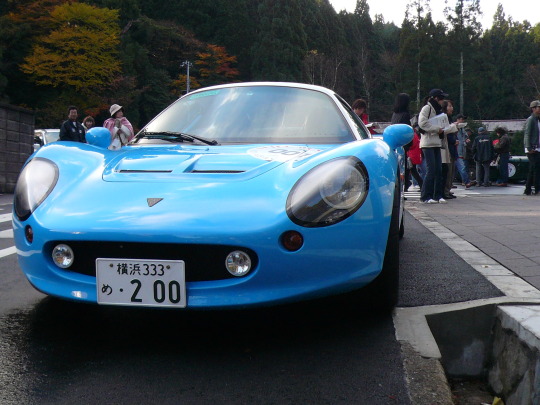
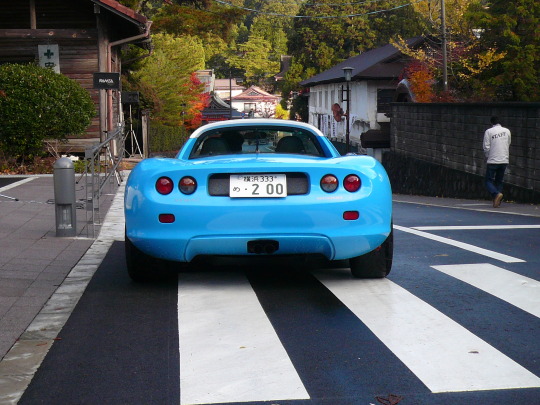

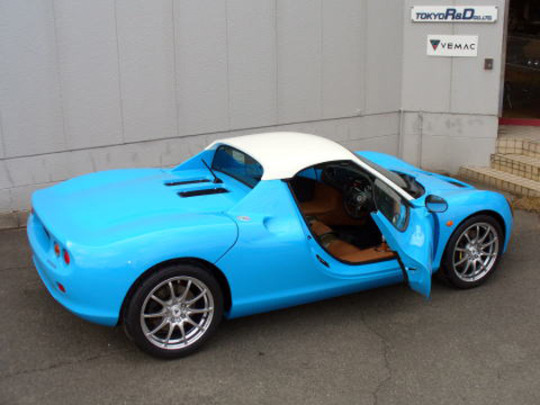
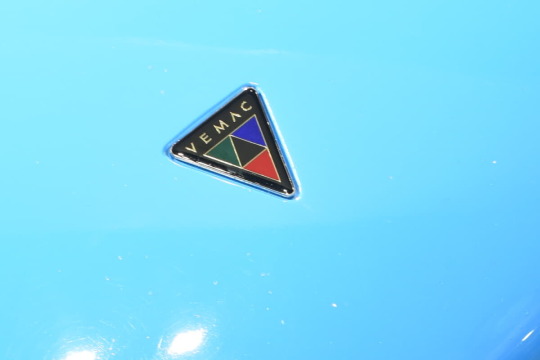
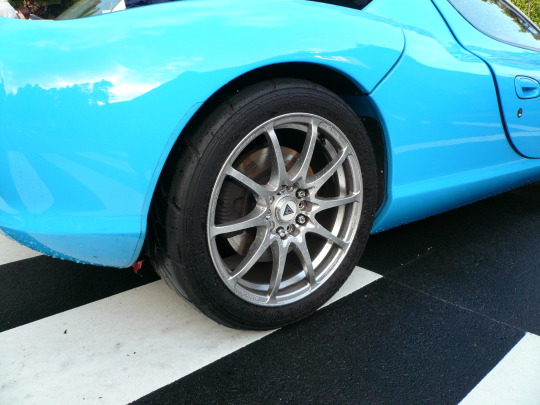
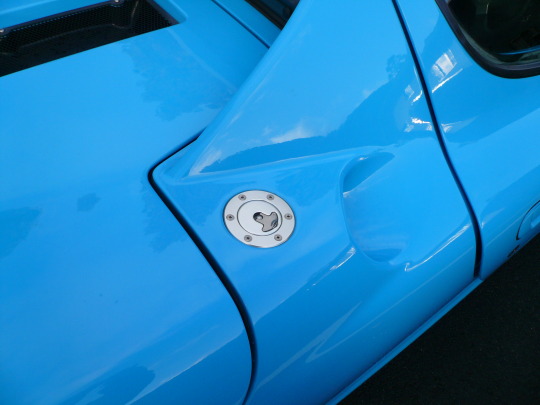

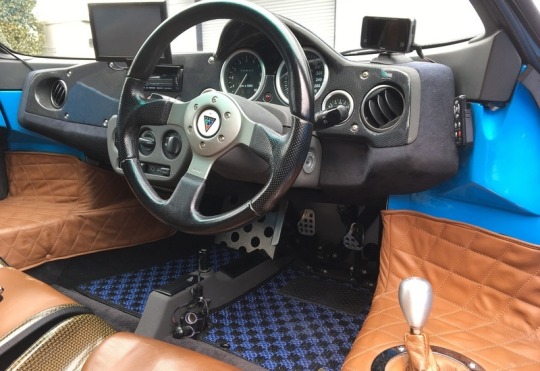
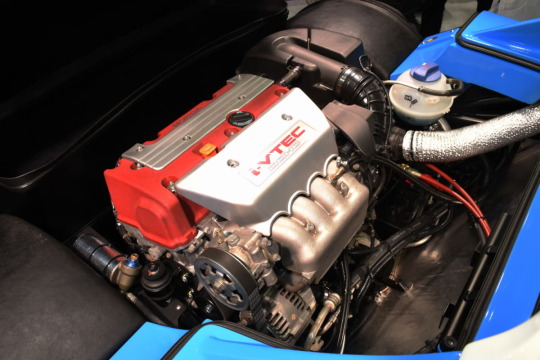
Vemac RD200
The original Vemac was powered by the old Japanese domestic market Integra Type-R’s 1.8-litre four placed longitudinally with a bespoke gearbox. These days it’s powered by the JDM Civic Type-R’s 2-litre ‘K20’ unit, sitting transversely in the car, allowing the Civic’s superb six-speed to be retained, but at the cost of raising the car’s centre of gravity a fraction. That should hardly be noticeable, but the power hike from the old 180 to 220PS (217bhp) certainly should be.The Vemac’s carbon and Connolly leather seats feel even lower than the Exige’s and the gearlever is on the driver’s right, mounted on the leather-clad door sill. Standard equipment includes electric windows and air-con strong enough to cope with Japan’s 40C, 90 percent humidity summers, and enough leg- and headroom to accommodate anyone up to 6ft 4in comfortably.The V-TEC motor positioned directly behind the driver’s head makes plenty of noise, which should give some clue as to how truly hardcore a machine the RD200 is. Keeping the V-TEC in its 6000rpm-plus sweet-zone is easy thanks to that slick type-R box, and acceleration through the gears is as smooth as it is rapid. You can easily find yourself bouncing off the 9000rpm rev-limiter. Vemac doesn’t have an official 0-60 time for the RD200. Steering is light, transmitting every ripple and dip in the road through the wheel, which is a good thing at speed on well-kept roads, though it can lead to tramlining on well-worn highways. The suspension features fully adjustable Showa dampers.In essence, the Vemac is a race-bred track car that can be used every day.
71 notes
·
View notes
Text

I have a cold and I'm tired, so I'll post better pictures later, especially ones of the new T-Trak module I recently built. But I did want to show at least this little thing I did with some of the leftover material. Not all of the leftover material, though. I have so much leftover wood strips…
Anyway, this is a very small section of a North American style railroad trestle (I think they're also a thing in Australia?), based on plans by the Great Northern, but then adapted with more bracing because I think that looks better. The height is chosen so that it can be connected to T-Trak modules if you replace the connectors. The track is… I don't actually know. Might be Minitrix? Something I found on my desk.
The wooden structure is all built by hand, out of 2x2 mm balsa wood (main frames), 3x3 mm pine (the sections under the plastic track piece and 1x1 mm linden for the bracings in the longitudinal direction. All cut by hand with a sharp cutter knife (except the 3x3 mm pine, I used a tiny saw for that) and glued together with wood glue.
The locomotive is either Athearn or Atlas, I can never remember which of these is which. I think Atlas. And yes, the rear truck isn't on the rails properly, as I said, I'm sick.
This project was a lot of fun, as was the full T-Trak module (I'll post about that later, hopefully in a couple of days), but also sometimes a bit annoying. I know a couple of places that I could do better, but the main one is the ties. They should be much wider for a bridge like that, but I am not aware of commercially made wide ties. Maybe I'll need 3D printing for that, because I don't think gluing rail profiles to wooden ties is the proper solution. Still, it looks neat as it is. Feel free to ask questions if you have any!
11 notes
·
View notes
Text
Local Dumbass Has OceanGate Titan Sub Theory
I don't know shit about this except what I have looked into and thought about regarding my mechanical engineering degree.
Yesterday afternoon, when I first heard about it, I thought the extent was that Titan had gotten tangled in some wreckage and also had a communications failure. Granted, I was in the middle of a 15 hr car ride home so I couldn't do much research into it.
Today, I've done some research and thinking about it because the mystery of it fascinates me. I am going to kinda journal/ record my thought processes as I was messaging my partner about it earlier.
I felt inspired by the twitter user Peter Girguis and wanted to do the research myself in understanding the materials and design of the vessel in addition to understanding the timeline of events.
Background:
At 9:47 am on Sunday, June 18th, the vessel had lost communication contact with the Polar Prince, and the last known location was received at 10:00. Though the communication system and location tracking were separate, previous history denotes either one or the other experiencing blackouts before successful recovery. This time, both of these have failed in a 13 minute timeframe, approximately halfway through its 2.5 hour dive time.
Initially, I feel strange about the fixation of criticism over the usage of a game controller. Yes, I do find the humor in it, about the indication of cheapness, but it doesn't feel right to just blame the interruption of input connection from the controller for the loss of communications and then the location tracker.
Honestly, my interest piqued at the mention of the use of a new material being used for the design - carbon fiber
I watched the Sunday Morning segment about David Pogue's 2022 expedition because I wanted more context about the design and to get a better mental picture. The parts that struck me was the verbiage of the contract in combination with the attitude of the OceanGate CEO, Stockton Rush. It concerns me in the beaming pride that the man shows in his sourcing of shockingly cheap parts and the callousness of tossing the controller around. I find the lack of discussion around safety concerns or mitigation of risk factors incredibly disturbing.
I began to look for papers documenting the behavior of carbon fiber material under compressive load and surprisingly found this article detailing plans for a near identical vessel from a few years previous. I find it interesting that the sole reason carbon fiber was selected for use was because it would cut down on the cost of the vessel. Not safety, or because existing research pointed to increased durability, or anything. Just that theoretically, the material would make the hull lighter in weight and they wouldn't have to pay for the foam applied to metal-hulled vessels to offset the metal's weight.
I then found a paper detailing the failure mechanism of carbon fiber reinforced composite under longitudinal stress detailing the effects of the material under compression. From my understanding of the failure modes detailed in the paper I created my initial assumption.
What I think happened is that the carbon fiber hull could not handle the load cycling of repeated dives. At a significant pressure providing a compressive force on the material at freezing cold temp, the carbon fiber became too brittle and failed either along the the middle in an axial line or at the penetration sites required to attach the titanium end caps.
Also I noted that the monitoring system depends on strain gauges attached to the titanium pieces that measures the metals' deformation, but wasn't sure if they would be as effective in use for the carbon fiber. Furthermore I couldn't see how it was effective in use as an appropriate safety monitor, or how an evac plan was supposed to be constructed around it given the requirements of the human body and recovering from depth pressure.
The carbon fiber hull is entirely shielded from view from the outside because it is encased by the sleek looking glass fiber shell. This shell is incapable of standing up to the depth pressure and provides no structural support whatsoever. What it does do, however, is make the whole craft look nice and capable.
The hull is about 6" thick and thankfully when carbon fiber begins to fail under compression, the failure can be visible from the outside of the thickness to the inside. If the hull itself is thoroughly checked before each and every submersion, signs of failure and weakening can be noticed before a complete failure. The mission can be aborted and lives can be saved.
However, if failure is detected, then the entire hull must be scrapped and replaced by a newly manufactured one. Even if the visible signs of damage don't look "that bad", the extreme pressure placed on it is too much to fuck around with.
I also do not assume that the hull can be patched with additional layers of carbon fiber. I feel it is extremely important that all of the fibrous threads used throughout the hull are continuous and unbroken to prevent shear stresses from forming in between the undamaged remaining section of the hull and the patch.
Personally, I think there was a lack of effort on ensuring safety. I think they became overly familiar with the craft and began to think of it more as a reliable vehicle that enabled them to do research and secure funding instead of a material testing experiment where theye were cycling it though who knows how many loads with lives inside. I genuinely believe that when the incident reports are written, it will expose that the hull was exposed to many more cycles of loading in extreme conditions than previous lab testing experiments under controlled conditions. If we (the engineering and scientific community) are lucky, we will be able to recover and analyze the fracture surfaces from the wreckage and understand how carbon fiber fails in a cold and highly compressive environment.
Then I take a break and think about the role of Journalist David Pogue as people condemn him for poor reporting on his segment report, and look up his history in reporting and journalism
There's more I want to add to this later but for rn this is all I wanted to put down for rn.
74 notes
·
View notes
Text
The Priory School pts 2-4
So, I was away and then I was sick, so this has taken a while to get around to. Sorry! In case you've ever been curious, going on a plane with a cold is an utterly miserable experience and 0/10 would not recommend. Don't do it. My ears still have not recovered. They should not be crackling like this.
Last time, a young boy whose parents had separated (leaving him with apparently the parent he liked less as primary caregiver) was shipped off to boarding school, from which he disappeared after receiving a letter allegedly from his father. A school teacher disappeared the same night along with a bicycle. The father of the child didn't want scandal so he's not telling anyone that his child is missing - I guess he really wasn't interesting in that father of the year award - and he and his secretary came to tell Holmes to back off.
Lots of people seem to suspect the teacher in spite of the fact he appears to have left in somewhat of a hurry and only one bicycle was missing. I find the secretary suspicious mainly because he's become such a fixture in the narrative (and because he's the one who's providing a lot of the information for the case and also the guy who posts the Earl's letters for him... was it an earl? My heart says it's an earl. Personally I think marquises are criminally underused, but it's more likely to have been an earl.)
Did I remember it all?
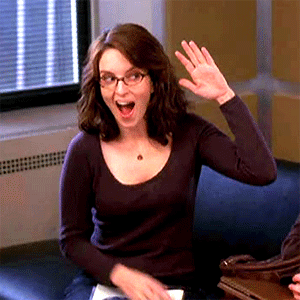
Part 2
"He had obtained a large ordnance map of the neighbourhood, and this he brought into my room, where he laid it out on the bed, and, having balanced the lamp in the middle of it, he began to smoke over it, and occasionally to point out objects of interest with the reeking amber of his pipe."
I assume that this means objects of interest to the case, but considering it's Holmes it could mean anything at all. Which is a far more charming image. Just Holmes poring over the map and occasionally saying 'oh, look here, Watson, the contour lines are very circular here abouts.' 'How does that pertain to the boy, Holmes?' 'What? Oh, not at all, but it does suggest some kind of ancient burial mound might be concealed there.'
"...there is no side road for a mile either way."
Excellent. It does make things easier.
Oooh, a map. A map. I do love a map.
Although, that inn is definitely called the Fighting Cock Inn, not the Fighting Clock Inn (there's one with a similar name nearish where I grew up).

Yep, that's Fighting Cock Inn.
Wait a sec... Heidegger's Body? Is Heidegger the German Teacher? Is he dead? Did I miss him dying? Oh... RIP Heidegger. I'm not sure your body has been discovered yet in the text, but apparently it's out there.

“In the van of the gipsies who camped on the moor. They left on Tuesday. To-day the police traced them down and examined their caravan. This was found.”
Well it's not them, unless they're someone else in disguise. I suppose they could be working for his mother. But thank you for the reminder of the racism, I guess?? I had almost forgotten about that in my eagerness to read the story.
"Now, Watson, there is cocoa ready in the next room. I must beg you to hurry, for we have a great day before us.”
Well, at least Watson got cocoa this time? Last time I don't think he got anything until after a long train journey, so this is better?
“I am familiar with forty-two different impressions left by tyres. This, as you perceive, is a Dunlop, with a patch upon the outer cover. Heidegger's tyres were Palmer's, leaving longitudinal stripes. Aveling, the mathematical master, was sure upon the point. Therefore, it is not Heidegger's track.”
OK, Holmes knowing 42 types of tyre track, fine. Makes sense. THe Maths teacher knowing what the German teacher's bike tyres looked like? Weird. Unless he also has bike tyres as a special interest.
"The more deeply sunk impression is, of course, the hind wheel, upon which the weight rests. You perceive several places where it has passed across and obliterated the more shallow mark of the front one. It was undoubtedly heading away from the school."
I don't... understand how that works. Surely it would have crossed over the front tyre track no matter which way it was going?

“But we have a long way still to go. Kindly walk clear of the path. Now let us follow the trail. I fear that it will not lead very far.”
Hey, Holmes looked at the map too! I joke, I joke. But yeah, sorry Heidegger. You seemed like a good guy.
"That he could have gone on after receiving such an injury said much for the vitality and courage of the man. He wore shoes, but no socks, and his open coat disclosed a night-shirt beneath it. It was undoubtedly the German master."

And thus to part 3. Poor Heidegger did not deserve to die. He was doing his best.
Part 3
As we approached the forbidding and squalid inn, with the sign of a game-cock above the door, Holmes gave a sudden groan and clutched me by the shoulder to save himself from falling. He had had one of those violent strains of the ankle which leave a man helpless.
Part 3 starting out strong at the Fighting Cock Inn. And please, Watson... like we believe Holmes has twisted his ankle. Please tell me that by this time in your association you did not believe Holmes had actually twisted his ankle? The man once pretended he was dying. He once pretended he was dead. You cannot tell me you honestly believed he had twisted his ankle.
“Look here, my man,” said he. “This is really rather an awkward fix for me. I don't mind how I get on.” “Neither do I,” said the morose landlord.

Look, I know he's a dick and he's the landlord of a pub named after animal cruelty, but still... I kind of like Mr Hayes. His level of fucks given is very Life Goals.
“Pals of the Dook, I suppose?” said the landlord, surveying our mud-stained garments with ironical eyes.
Ah. he's a duke. Well, I remembered the rest. Marquises are still underutilised.
“Because we bring him news of his lost son.”The landlord gave a very visible start.
And that's not suspicious at all.
Again a swift change passed over the heavy, unshaven face. His manner was suddenly genial.
Oh my god... maybe try not to react? I take it back, this guy gives far too many fucks. All his idgafuckery is an illusion. He's a fraud.

“Strange, Watson, that we should see tracks all along our line, but never a cow on the whole moor; very strange, Watson, eh?”
Oh bloody hell, the cows were horses all along. I can't believe I didn't think of that. I trusted Holmes to know the difference between cow and horse tracks, but I guess hes taken up too much brain space with tyre tracks and tobacco ash for animal tracks to be in there as well.
"By George, Watson, it was no brain of a country publican that thought out such a blind as that!"
Classist.
“The Duke's secretary!” cried Holmes.
Vindication! cried I.
Holmes keeps 'crying' things when they are trying to be stealthy.
Wilder doesn't seem like the type to cave someone's head in with a blunt object. Presumably he was on the dunlop tyred bicycle and someone else (the innkeeper, perhaps) was on the horse cow with the boy.
I know a lot of children say they want their teachers to die, but if this kid watched that happen and was unaffected then he's severely lacking in empathy and I in turn will be severely lacking in empathy for him.
“I fancy that I see your Grace's cheque-book upon the table,” said he. “I should be glad if you would make me out a cheque for six thousand pounds. It would be as well, perhaps, for you to cross it. The Capital and Counties Bank, Oxford Street branch, are my agents.”
Holmes is being exceedingly mercenary in this one. He does not like this guy, it seems. Perhaps the man he saw in that window was the Duke himself and he had his own son kidnapped in order to... idk? Incriminate his wife so that he could divorce her properly or something? I imagine kidnapping would be grounds for a divorce even in Victorian times.
“I accuse you,” said he. “And now, your Grace, I'll trouble you for that cheque.”
J'ACCUSE!

And so to part 4.
I'm pretty sure in the first part I said the guy either knew exactly where his son was or he was the worst father ever. I mean, those two things were never mutually exclusive, were they?
Part 4
“I hardly understand your Grace.” “I must put it plainly, Mr. Holmes. If only you two know of this incident, there is no reason why it should go any farther. I think twelve thousand pounds is the sum that I owe you, is it not?”
We gonna indulge in a little bribery, huh? As a treat? Going to throw some money around and pretend like a man wasn't murdered because of our petty family squabbles?
Heidegger was worth more than £12k.
(That's about £1.2mill today btw)
“I fear, your Grace, that matters can hardly be arranged so easily. There is the death of this schoolmaster to be accounted for.” “But James knew nothing of that. You cannot hold him responsible for that. It was the work of this brutal ruffian whom he had the misfortune to employ.”
Pretty sure that's still a crime... that resulted in a man's death... for literally trying to save your son.
With all due respect, your grace (and that is none) Fuck. You.
"He lost not an hour in breaking entirely with the murderer. Oh, Mr. Holmes, you must save him—you must save him! I tell you that you must save him!”
My dudes, is the duke fucking his secretary? Kinda seems like the duke is fucking his secretary. This is the first time he's shown concern or emotion for anyone other than himself this entire time. Sure he knew where his son was the whole time, but still...

"I am right glad to hear it, if it will not react upon the fate of James.” “Your secretary?” “No, sir; my son.”
Oh... they not fucking. Nope... well that... let's draw a line under that shall we and back away from that entire line of thought.
Mmhm
God the duke is a dickhead.
"When I was a very young man, Mr. Holmes, I loved with such a love as comes only once in a lifetime."
Oh fuck off with that shit.
"...I gave him the best of educations, and since he came to manhood I have kept him near my person."
You couldn't have helped him get a job that... wasn't connected to you. So he could be his own person and not basically his own father's servant for his entire life?
So , let me get this straight. You didn't acknowledge him - even just to himself - you arranged and controlled his life and then when he found out he threatened to expose you? Honestly... fair.
And understandable that he hates the legitimate kid, too. He really shouldn't be taking it out on the child, obviously, and he's an arsehole, but it's absolutely understandable.
"All her pretty ways, too—there was not one of them which he could not suggest and bring back to my memory."
There comes a time when this stops being sweet and starts being creepy.
Why send him to school and not to his mother, which is.... further away from your jealous illegitimate child?
"I answer that there was a great deal which was unreasoning and fanatical in the hatred which he bore my heir. In his view he should himself have been heir of all my estates, and he deeply resented those social laws which made it impossible."
He may be a terrible person, but he does make some good points.
"I found him safe and well, but horrified beyond expression by the dreadful deed he had witnessed."
So Arthur's the best guy in this family, huh? Poor kid.
“This is indeed a most serious matter. Even more culpable in my opinion, your Grace, is your attitude towards your younger son. You leave him in this den for three days.” “Under solemn promises—”

Yeah, because people always keep their promises. Particularly when there's the chance of blackmail involved.
Worst Dad of the Year?
"What he will divulge I cannot tell, but I have no doubt that your Grace could make him understand that it is to his interest to be silent."
Not sure what he can offer a guy who's literally going to die either way? A quicker, more painless death perhaps. He doesn't seem like the type who would care about other people.
“In that case, your Grace, since you have yourself stated that any unhappiness in your married life was caused by his presence, I would suggest that you make such amends as you can to the Duchess, and that you try to resume those relations which have been so unhappily interrupted.”
I don't know the woman, but I know she does not deserve that. Holmes, you have got to stop trying to play matchmaker between rich dickheads and the women they have hurt. It's not a good look for you.
“These shoes,” it ran, “were dug up in the moat of Holdernesse Hall. They are for the use of horses; but they are shaped below with a cloven foot of iron, so as to throw pursuers off the track."
That explains Holmes' confusion.
Holmes folded up his cheque and placed it carefully in his note-book. “I am a poor man,” said he, as he patted it affectionately and thrust it into the depths of his inner pocket.
Well that's only true relatively, Holmes. I think almost everybody is poor compared to him. And you're being a right little shit about this, aren't you? Not that he doesn't deserve it, but still.
So that was the case. The duke at the time of initially talking to Holmes didn't know where his son was so he really was just a terrible father in so many ways.
I hope the Duchess tells him where to get lost and keeps living in France on his dime, tbh. And that Arthur goes and lives with her because clearly his father doesn't actually care about him at all.
20 notes
·
View notes
Text
Samya’s bad horrible no good day at Loxton-Duchêne (3.3k word practice intro)
As the air marginally warms, the fog that had loomed over the ocean like a dark, dreaded thought comes to swallow the skyline above them. It’s hard to make out where the cityscape ends, the cream-grey concrete silhouettes losing their rigid form as they dissolve into the humidity. The uniform color of it all washes out the dirt-laden snow that creeps at the edge of the tracks, making Samya squint and curl her lip. She puts her hand against her brow.
“Excuse me,” she says, waving at an ice blue krtrim that walks away from its group to puff on its miti, leaving the rest to load material up and onto the doodlebug. It looks up at her, large yellow eyes twinkling in the dim overcast, sleet collected on its shoulders. “This is Loxton-Duchêne, isn’t it?”
Its voice, cold: “Yes, ma’am.” Steam rises from its mouth and forms dew on its glass eyes.
“Which way to the assembly yard? Is it far?”
It points to the idling train engine where its fellow krtrim crawl about it like ants. “We’re bringing alloy to the blast furnace, north. Follow the line and it’ll take you there. It’s past the refinery.”
She can feel the tug of north at her back without turning to face it. The earth pulls her longitudinally along its axis, orienting her as naturally as it was to know up from down. She smiles. “Thank you.”
The krtrim takes another drag, narrowing its eyes, exhaling vapor. A dull pain has formed at its temple, which it presses a finger to. Samya strides past it up and onto the doodlebug. In the next moment, the ache is gone, and it had never seen her. Its coworkers call for its return, and she catches the end of sentence: “who are you talking to…?”
She takes a seat on one of the worn aisle chairs, their cushions flattened against the wood arches. It’s nice to take the weight off her feet, and she crosses her legs over one another while holding a hand over her knee. Where she’s sat at the front, she can see out the driver’s window, perched next to it being a heavily-clothed krtrim who reads a faded CRT display embedded into the dashboard. Its mouth opens to shout something in Krtrim Binary, miti steam rising with its voice, then it bangs on the metal wall with a piece of rebar it pulls from the console. The workers from outside file in like mice in rows.
The driver barks at them again as they sit. She can’t understand the words in sound, but she can get the gist of it through the electric fields which weave themselves through her. “Slow krtrim get fed to the furnace! If you’re not worth more than your circuits, don’t bother coming!��
There’s a murmur of agreement, and the engine shifts into gear. They gain speed to a crawl, then a walk, until they have enough momentum to settle into a comfortable cadence just fast enough to send a breeze through the empty windows. The air brings the smell of hot coke, and the ice along the tracks gradually melts away as they get closer to the furnace.
She turns to watch the scenery, what little there is of it. The Loxton-Duchêne campus sits upon the land like an open wound. Seemingly built to rust, its iron skeleton is a rich, crimson brown, dotted with aviation lights that give it a faint red sparkle. Smog rises from towers as the heat of this place, this organism, is exhaled in a great breath back into the sky. Mixing with the hanging clouds, it casts a silver shadow over it all—a cold, lingering sadness, the weight of which is heavy upon their shoulders. It might’ve been a serene view if not for the noise. The ruminating chew of the railcar engine, steam spitting from exhaust pipes, hydraulics and air brakes, bells ringing in doppler-warped tones, hammer strikes igniting, a constant coronal buzz from the pantographs above, the synchronized movement of every worker and their footsteps—they mesh into each other until they become a singular, unified sound, a roar like that of a seashell pressed to her ear. Piercing the wall of noise, there’s the sharp voices of the krtrim in the cab, talking and gossiping amongst themselves. They speak of missed quotas, interpersonal quarrels, or express a dull excitement at the prospect of a full ration ticket by the end of the day. In their outerclothes, hair covered by scarves and brimmed caps, all wearing the same khaki romper, they look identical. Their blue-white faces peek out from under all the fabric, smooth and semi-translucent. When the light hits them just right, the conduits under the skin draw symmetrical root-like lines under their dark yellow eyes.
The tracks enter a bank angle. They’re lifted up onto an overpass, the stone ballast giving way to a trellis bridge which carries them over a railyard. Long lines of sinter flatcars, sugar-coated alabaster with the thin snowfall, trudge to the depots where they drop their freight to be carried by skip cars to the top of the furnace which is just ahead. She can trace the venous piping, erupting from the ground, to its center. The tuyeres that slither and coil about the structure obscure its true shape. It beats with a rhythm that carries through the ground, a massive heart hidden behind ribs, sinews and lungs—its heat, even from this far away, urging a flush to her mouth that brings her pulse against her teeth.
The car shudders as it slows. The brakes squeal, grinding them to a halt in front of the snaking catwalks which lead to the tapping point. At once, the workers bustle past her, the driver blowing a horn with the tug of a wire. Samya stretches and gets up. Once everyone else is out, she drops down onto one of the railings.
The yard is bustling with motion. Steam from air compressors and hydraulic pumps hiss and whistle from pipes, while the flutter of electrolarynx voices from every moving body fill in any silence there might have been. Much taller than the doodlebugs, the freight cars groan with strain against the tracks. A cloud sweeps over them as coke is dumped from the rolling hoppers onto conveyors, throwing up dust that makes the air smell like campfire.
She threads herself to the other side of the crowd, as agile as a needle through fabric. The krtrim, which all stand at five-foot, don’t look up as she passes them. She sticks out—half a foot taller, paired with the silent work of her muscles and the brown, blood-rich tone of her skin, she’s an alien in the sea of blue faces. If she were somebody else, then she’d certainly catch suspicion. But they say nothing, spare her no looks, just flow around her like water, a stone parting tides in a stream.
Weaving together at the other side of the incline is another depot, and more doodlebugs. One has just set off, headed further north as it drags cargo on wheels behind it. She picks up the pace so she’s at a light jog. An updraft pushes into the small of her back, nudging her into a sprint that she times carefully with the movement of the cane in her hand. The ground departs from her feet and is replaced by the steel plating of the car, and she pulls herself up and onto the rear ladder with her right hand. Inertia forces her body back at an angle which she corrects and begins climbing. With some effort she’s able to step onto the caboose landing, bringing her in front of an exit door and the small terraced balcony that encases it. Some rocks she’d kicked up clatter back over the edge.
She, with a huff, opens the sliding door. There’s less krtrim here than before—dressed differently, too. Their colored hair is allowed to fall to their shoulders, half-covered with scarves that keep a ball cap snug against their heads. They pay her no mind as she finds a seat no one’s claimed yet.
A conversation picks up where it left off. “Did you hear Sonam got close to the cat yesterday?” says one whose smile catches on the sharp consonants of Krtrim Binary. “We’re going to compile our tickets to buy some meat.”
“I thought we were feeding it dough,” another says.
“Cats only eat blooded-flesh," says a third, indignant.
“I hope it doesn’t need to be alive. Asalee markets only sell it dried, and it’s expensive.”
“That’s why we’re pooling our tickets for a direct cuprum exchange. The dry flesh has to be better food than the mice running around here, anyway.”
Samya fishes around her pocket and finds a couple loose bills. She considers sharing it, but it’s harder to scrub a memory of charity than just her presence here alone, so she doesn’t. She already looks out of place as it is.
“Let it eat the mice! They chew on the wires.”
“What? That makes more work for us, then!”
They continue talking, pulling out their tickets, folded and wrinkled from their coverall sleeves. The laughing, interrupted by banal, muttered non sequiturs, all droning into the lull of the engine noise. Just listening to it has made her lose focus of her surroundings, a conclusion she comes to with a jump. She turns her head, eyes darting from the front of the cab to the back. It’s only her, still alone, isolated via the invisible salt line she’s drawn about herself. The racing of her heart in her ears ebbs away.
She swallows and peers out the open window. Breathing in the fresh air helps the adrenaline break down in her bloodstream. Outside, it’s darkened a bit. The blast furnace is shrinking over the horizon. The stacks about it remind her of minarets, slender tubes rendered black against the haze where they crown the great shape of the furnace. She thinks of those faded polaroids of masjids her father kept in frames, aged and faded, showing a world where the sun was still warm on the skin. If you looked close enough, you could see the small figures of her family in the corners, unnamed, forgotten. She imagines them now, as apparitions in the fog. Smiling.
Her hand slithers from under her outerclothes over the sill to place itself in the wind. When she flattens her fingers into a blade, the lift raises her palm. She rides it up and down, then again. Some stray raindrops pull the warmth from her knuckles. Her fingernails go from a light pink to oyster purple. She keeps that position even when pins and needles gather under her skin.
The shuffling of fabric and limbs brings her attention back to the cab. Across the aisle, a warehouse rises into view. The krtrim stuff their belongings back into their bags, inching to the edge of their seats. Samya retracts her hand and rubs it.
She concentrates. She plucks one of the krtrim from the rest, using an unseen hand to take its chin and make it face her. She asks, without words, “Is this the assembly yard?”
“Yes,” it thinks. “The next stop.”
She lets it go. It blinks, then turns around and forgets. She begins to wring the straps of her satchel like a child squeezes their shirt when they cry. The pressure in her chest is making the lights flicker.
She had been taught to hide herself well—hide this clairvoyance, the thing that bloomed in the space just behind her eyes, leached out of her like ink through parchment, twisting and weaving and winding around everyone, everything, these great vines that rooted her and the world to something deep in the ground. Her mother’s hand, soft on her shoulder, voice to her ear, sewing it into a shape she could hold, could touch. Tamed. That power, raging like a flame between her ribs where the heart should be. It swells now, forcing hot breath out her nose, electricity to her feet. But her face remains still. Body rigid as stone.
The train stops. Everybody’s on their feet, filing towards the door which has opened at the front. She’s the last out.
The warehouse sits before them, sagged and sunk into its foundation. Instead of windows, it displays open bays shadowed by retractable garage shutters which have been raised. The roof’s awning expands across the pad where krtrim carry boxes, push handtrucks and smoke. A gate places a barrier between the train depot and the inside. Following it, it leads to a checkpoint where the workers find their punch cards and stamp them. Samya separates from the line and walks ahead.
It’s all noise. Conveyors are squealing on their belts as shards of electronic miscellanea are carried about. Krtrim work away on stools, grabbing assemblies from the line and poking at them with tweezers, soldering irons and voltmeters, yelling at one another. The rest are pulling carts of material, entering data into terminals or manning forklifts. One trundles past her while it carries a pallet of multicolored wire. She steps past it, finding herself running into the fast-moving bodies of the workers. One looks at her.
She places a question in its mind. “Where is the employee named Deepali?”
It’s who she’s come here for, who she’s stepped foot back into greater society for, after living as a recluse longer than she’d ever been any part of it. Samya isn’t even sure what she looks like; a human with brown hair, brown eyes, a skin tone just a few shades lighter, maybe? That described a lot of people. At least here, it’d be like finding a needle in a haystack. So she hoped.
The krtrim shakes its head, not knowing. She asks another. When she again gets no answer, she sends the message to them all.
“Tell me where Deepali is.”
A wave of thoughts rush into her. Most are variations of “I don’t know,” but she picks out the few that say something else.
“In the back.”
“Ask Simrun.”
What to do next is easy. “Show me.”
Field lines flash by them, curling around the crowd and piercing toward the east, where a door is being propped open with a traffic cone. She trails behind it, hand still tight ‘round her satchel strap.
It’s a little quieter back here, the madness replaced with fan noise and the sporadic scream of a drill. Around 30 workstations, which look more like cubicles, fill the space. There are maybe half as many krtrim occupying them. While they sit perched on their chairs, two per table, they position a convex lens to more closely see the bench, using pneumatic tools to tighten shining green boards onto metal plates. The delicate, spider-like shape of fleming valves are pulled from trays to be pressed into the vacant circuits, then soldered. She watches them as she walks.
They wear name tags on their breast pockets. A blue-haired krtrim displays one that reads SIMRUN, sitting alone. Its face is shadowed by its hat, a sugar stick between its lips that it chews while it breaks apart a new set of resistors. Samya puts a hand on its shoulder. It freezes.
“Where’d your friend go?” she asks, smiling at the empty chair.
Simrun doesn’t look up. “Hiding from Bharat,” it says, twisting the sugar stick with its tongue. The immediate association that follows the name implies Bharat must be a superior. “She’s probably smoking. Check the depot.”
Her gaze is nudged towards the open bay, where rows of unloaded crates have been stacked on wood pallets. Their hide-skin covers are wet with the rain. The wind catches them, and makes them flutter under the tension of the bungee cords. When she looks closer, lifting her chin, she sees a wisp of vapor rise over the edge of a wrapped box.
Samya’s hand squeezes, then releases. “Thank you.”
The clatter of Simrun’s sugar stick falling from its mouth is the only response it gives. It wipes its glass optic with its sleeve, the memory of her reduced to a trick of the eye.
The distance from where she stands to the depot ahead stretches before her, the short expanse of concrete loosening into a thick mud that holds fast onto the soles of her shoes. Her grip on her cane is making the wood creak. She’s shaking.
What should she say? She ruminates on it. It’d be easy to look into her mind, sure, but that was just a temporary solution to her problem. The information she needed would certainly be deeper between the brain folds, and harder to pry out. The question she wants to ask, “Tell me about your father, his research, his life, who I am, who you are,” is too forward. Planting it in her head will be too much, too fast. It’d make her vomit, as surges of clairvoyance usually do. Samya was never any good at these segues.
It was simple with the mundanity of routine. People don’t remember most fleeting glances from the corners of their eyes, or conversations half-heard in daydream. That’s all she was to them—a sliver of a reflection that made them look twice, a phantom itch, the interruption of thought.
She’s still deciding on what to say when she rounds the corner. All the anticipation she’d built up immediately shrinks back into her stomach. The person on the other side is just another krtrim, sitting cross-legged and coxing steam from a miti. It, unlike the others, reacts to her presence, whipping its head up to stare at her.
“I’m looking for…” the words fall from her mouth.
Something isn’t right. As she extends her clairvoyance, it’s met with a sudden wall. A shockwave erupts through her, like she had swung a hammer at an immovable object, and the force of it was now ricocheting up her arms, resonating into her bones as if she were a tuning fork struck on metal. She sees flashes of chimerical light through her eyelids until the sensation subsides into an ache. The taste of salt burns at the back of her throat.
She swallows and forces herself to finish her sentence. “… I-I’m looking for Deepali. Do you know where she is?”
The krtrim is wholly unremarkable. Its short auburn hair just barely peeks out the bottom of its scarf. It almost looks brown where it frames its blue-green face. “I’m Deepali,” it says in a rising tone, bordering between a question and a statement. Its hand presents its nametag, and it’s true.
Samya laughs. “No, no, not you, someone else.”
“I’m the only Deepali here,” it retorts.
She loses the smile she’d made, chewing at the inside of her cheek. “You’re sure? I’m looking for a human, asalee, in blooded-flesh.”
The krtrim raises its brow. “She isn’t here.”
“It’s really, really important that I talk to her,” she emphasizes, holding out her clenched fist. She stiffens her jaw as she tries to press an answer out of it, but its mind is sealed off too tightly, and it’s making her dizzy just trying.
It regards her closer, eyes going from her head to her feet and back. Miti vapor blows past its lips. “Who are you?”
Samya stumbles on her voice. “I’m… I don’t….”
It stands, and she backs up into a box. The abrupt movement, unseen by her clairvoyance, startles her. This is a proxy, her common sense screams, a vessel piloted somewhere else, from far away, where you can’t see it.
“Forget it,” she manages. “She’s not here.”
The krtrim watches as she spins on her heel and walks away, eyes boring holes through the back of her head. Adrenaline stings where it pierces her sternum.
11 notes
·
View notes
Note
Based off the paper I am writing that was due 44 minutes ago: what do you believe a “social justice approach” to higher education should look like
hello beloved mutual i see you have brought me a question which will not cause me to have to word and reword my response carefully! i commend you.
okay so see the thing is i think there's a couple ways you can go at this.
on the one hand, you have "social justice approaches" that come from the dominant groups (white people, abled people, men, straight people, etc) which, while probably attempted in genuine faith, for many reasons (usually inbuilt biases, lack of knowledge because they've never personally had to deal with what they're attempting to address, etc) come off as shallow, insufficient, or, at worst, making the problems they're attempting to combat actually worse.
on the other hand, i truly believe that, if we go back to the meaning of social justice as it is intended—a productive, proactive approach—, this is something that is truly needed in academia, as, without concerted effort, academia is not accessible or welcoming to various marginalised groups for various, often interconnected, reasons. i think that, in order to combat this, academic institutions should attempt to get feedback from academics (be they adjuncts, undergrads, grad students, tenured professors, etc) they serve as to how to combat the problems they've identified—and, more than that, what problems those populations face that the academic institution in the question hasn't identified. there will always, always be some issue which even the most intelligent, well-meaning people in positions of power simply won't be aware of.
that's not to say i think that the onus is on those affected to effect change—i think, ideally, those who, in whatever way, render help to the academic institutions in identifying and formulating methods to combat inaccessabilities or hostilities, should be given some form of compensation—i think realistically the most probable compensation would be public recognition, as monetary compensation runs the risk of conflicts of interest—, and the institutions should ideally continue to follow up with the affected population(s) in longitudinal studies to track how effective (or not effective!) their attempts at enacting change are.
(these are all, i am aware, probably things you've thought of, and a rather shallow view of the problem—i am not referencing or citing any texts, merely speaking from my own experience, so i hope this is all cogent.)
(also good luck on your paper o7)
3 notes
·
View notes
Text
Also preserved in our archive
By Dr. Chinta Sidharthan
Unvaccinated volunteers who contracted COVID-19 in a human challenge study showed significant memory and executive function decline lasting up to a year, despite no reported subjective symptoms, prompting new questions about the virus’s long-term cognitive effects.
In a recent study published in the journal EClinicalMedicine, a team of researchers from the United Kingdom examined the cognitive deficits associated with severe acute respiratory syndrome coronavirus 2 (SARS-CoV-2) infections. They conducted the first human challenge study among a prospectively controlled group of unvaccinated SARS-CoV-2 naive volunteers, who were inoculated with the wild-type strain and observed for long-term cognitive problems.
Background Substantial research now indicates that long-lasting cognitive deficits impacting memory, comprehension, and concentration occur even after mild coronavirus disease 2019 (COVID-19) cases. A large proportion of individuals who recover from COVID-19 continue to experience “brain fog,” memory lapses, and difficulty forming words for months after the initial acute infection.
Cross-sectional and longitudinal studies have observed cognitive decline in patients one year after the infection, and brain scans have detected shrinkage in areas of the brain related to cognition and memory. Furthermore, blood tests in patients hospitalized due to SARS-CoV-2 infections have detected elevated levels of brain injury markers, such as neurofilament light (NfL) and glial fibrillary acidic protein (GFAP), indicative of potential future cognitive problems, though markers like Tau were not significantly different between infected and uninfected groups.
However, the retrospective nature of these studies has posed difficulties in accounting for the role of occupations, pre-existing health conditions, and social factors in the risk of cognitive deficits after COVID-19. Furthermore, the pace at which cognitive deficits develop after mild SARS-CoV-2 infections and the duration of these deficits remains unclear.
About the study In the present study, the researchers challenged a group of unvaccinated, SARS-CoV-2 naive volunteers with the wild-type strain of the virus in controlled conditions. The volunteers were then quarantined and followed up to determine the long-term cognitive impacts of COVID-19.
The researchers ensured that all the ethical guidelines were followed in this human challenge study, and written consent was obtained from all the volunteers, who were also compensated for the time spent in quarantine.
The study enrolled 36 healthy adults between 18 and 30 years who had never been vaccinated against or infected with SARS-CoV-2. Of these, 18 participants were classified as infected, while 16 were uninfected. The volunteers underwent extensive tests and screening, including blood tests, chest radiography, body mass index, and assessments for COVID-19 risk factors.
The participants were then intranasally inoculated with SARS-CoV-2 and quarantined for at least two weeks. The follow-ups occurred at non-regular intervals for up to a year after the inoculation.
The viral loads in all the infected participants were monitored twice a day through naso- and oropharyngeal swabs. Additionally, the researchers administered a subjective symptom survey thrice daily to track the symptoms. The participants were categorized based on whether they experienced a sustained viral infection, and six were administered remdesivir as a precaution.
The researchers measured the participants' cognitive performance through 11 computer-based tasks that measured various cognitive domains, such as reaction time, memory, spatial reasoning, and planning. The participants were required to perform these tasks at baseline, on each day of the quarantine, and at each of the five follow-ups. The primary cognitive measure was the baseline-corrected global cognitive composite score or bcGCCS.
Additionally, the researchers also analyzed the levels of brain injury markers, such as neurofilament light (NfL) and glial fibrillary acidic protein (GFAP), in the blood samples obtained from the participants.
Results The study found that bcGCCS scores indicated that the infected individuals exhibited significant cognitive deficits compared to the uninfected individuals. These deficits were sustained for almost a year, with no recovery or improvements noted. Despite these objective cognitive deficits, none of the infected volunteers reported subjective cognitive symptoms.
The cognitive area that showed the largest deficit was memory-related tasks, such as those measuring immediate and delayed memory recall. The infected individuals performed worse than the uninfected ones on memory-related and executive planning tasks.
The cognitive tasks were grouped based on whether learning effects were observed across sessions, and the results indicated that the cognitive differences between the uninfected and infected individuals were robust even after accounting for learning effects.
Furthermore, some brain injury biomarkers in the serum, such as GFAP, were higher in the infected participants than in the uninfected ones, but other markers, such as Tau and NfL, were not significantly different between the two groups.
Although these findings indicated that SARS-CoV-2 infections resulted in measurable differences in various aspects of cognitive decline, especially in the areas of memory and executive function, the statistical tests revealed no significant correlation between cognitive deficits and viral load, brain markers, and symptom severity.
Conclusions The study indicated that while objective and measurable changes could be observed in various aspects of cognitive performance due to SARS-CoV-2 infections, further research is essential to understand the biological mechanisms behind these cognitive deficits. The researchers believe that more long-term studies on larger cohorts are required to understand the long-term impact of COVID-19. Importantly, the study results suggest that these cognitive changes might persist even in the absence of subjective symptoms, highlighting the need for more sensitive assessment tools.
Journal reference: Trender, W., Hellyer, P. J., Killingley, B., Kalinova, M., Mann, A. J., Catchpole, A. P., Menon, D., Needham, E., Thwaites, R., Chiu, C., Scott, G., & Hampshire, A. (2024). Changes in memory and cognition during the SARS-CoV-2 human challenge study. EClinicalMedicine, 76. DOI:10.1016/j.eclinm.2024.102842, www.thelancet.com/journals/eclinm/article/PIIS2589-5370(24)00421-8/fulltext
#mask up#covid#pandemic#covid 19#wear a mask#public health#sars cov 2#coronavirus#still coviding#wear a respirator#long covid#covid conscious#covid is not over
32 notes
·
View notes